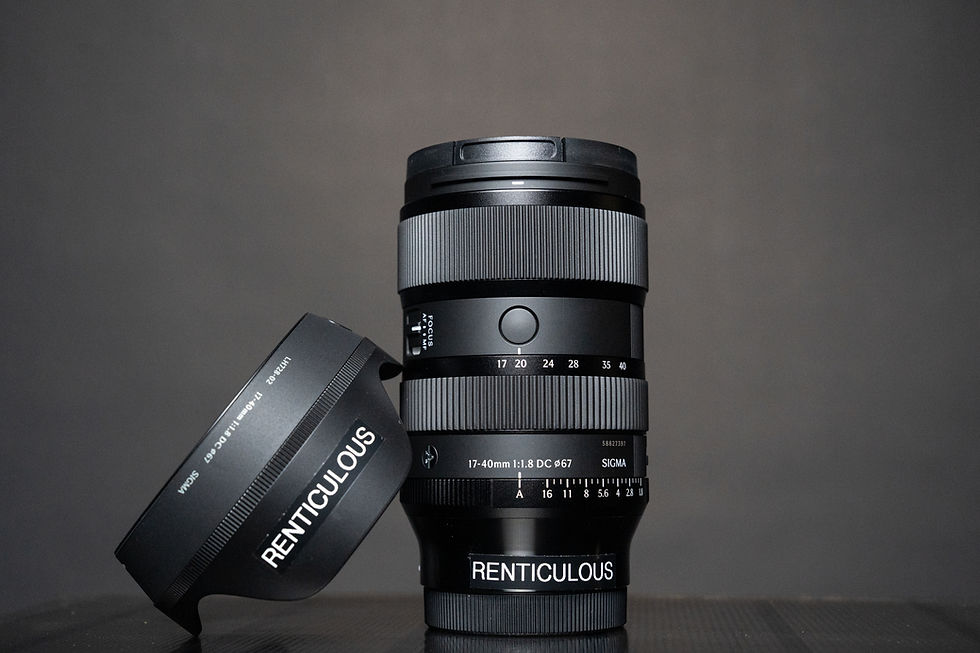Prime Lens or Zoom Lens?
- renticuloussg
- Jun 3, 2024
- 2 min read
Choosing Between Prime and Zoom Lenses:
Understanding the Differences
When it comes to selecting lenses for your camera, one of the fundamental decisions you'll face is whether to go for a prime lens or a zoom lens. Each type has its own set of advantages and considerations, catering to different shooting styles and preferences. Let's delve into the key differences between prime and zoom lenses to help you make an informed choice.
Prime Lens
Prime lenses have a fixed focal length, meaning they offer no zoom capabil ity. For instance, a 50mm prime lens will always provide a field of view equivalent to 50mm on your camera sensor.
Prime lenses are prized for their sharpness, clarity, and ability to produce pleasing background blur (bokeh), making them popular for portrait and low-light photography.
Prime lenses often feature larger maximum apertures (smaller f-stop numbers) compared to zoom lenses. This allows them to gather more light, making them well-suited for shooting in low-light conditions and achieving shallow depth of field for creative effects.
With their fixed focal lengths and simpler designs, prime lenses tend to be more compact, lightweight, and portable compared to zoom lenses.
Shooting with a prime lens encourages photographers to think more critically about composition and framing, as they cannot rely on zooming in or out to adjust the shot.
Zoom Lens
Zoom lenses offer variable focal lengths. They allow you to zoom in and out, providing versatility in framing without the need to switch lenses.
While some zoom lenses offer wide maximum apertures, such as f/2.8 or even f/1.8, they may be limited in their aperture range across the zoom range.
Due to their variable focal lengths and additional optical elements, zoom lenses are generally larger, heavier, and bulkier than prime lenses.
The versatility of zoom lenses allows photographers to adapt quickly to changing shooting conditions and subjects without the need to switch lenses.
So, which one to choose?..
Get the Zoom Lens if:
You value versatility and convenience
You need flexibility in focal lengths
You prioritize portraiture or event photography
You prefer a simplified gear setup
Get the Prime Lens if:
You prioritise optical quality
You enjoy shooting in low light
You prefer a lightweight and portable setup
You want to explore creative expression
Conclusion
Ultimately, there is no one-size-fits-all answer, and the choice between prime and zoom lenses depends on your individual shooting preferences, priorities, and budget. It may also be helpful to experiment with both types of lenses to determine which best suits your needs and style.
Why you should rent instead of buying your lenses
Renting can be daunting at the start, but think of it as a way to kickstart your photography journey! By renting, you gain access to various types of lenses and focal lengths, enabling you to find the most suitable ones for you without having to spend thousands on a single lens or go through the hassle of selling and buying just to try out a different lens.
Renticulous offers a wide range of Sony/Canon lenses (with more brands coming soon) for rental at the best price guaranteed!



